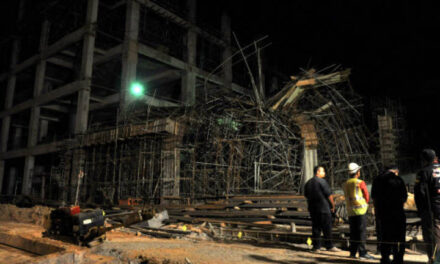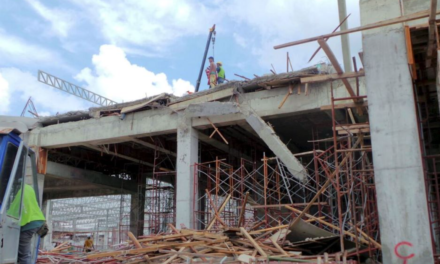 It was reported that the construction industry is still robust despite the lower ringgit as most of its raw material are available locally, according to the Construction Industry Development Board (CIDB).
It was reported that the construction industry is still robust despite the lower ringgit as most of its raw material are available locally, according to the Construction Industry Development Board (CIDB).
However, some construction players who needed to import machinery or equipment, were feeling the pinch, said chief executive Datuk Seri Dr Judin Abdul Karim.
“At the moment, most of the material is sourced locally so we are not that badly affected.
“The drop in the value of the ringgit is creating some uneasiness, but there are projects already in the pipeline, and these are big projects.
“There is a large amount of work which we have already committed to.
“So hopefully, we can get through these rough times and by the time the projects are completed, this uncertainty will be over,” he said in an interview yesterday.
He said the construction sector was still busy, adding that the number of projects would pick up again once the 11th Malaysia plan kicked off next year.
“In terms of volume, the amount of levy we have collected, which shows the amount of work going on has actually increased and is better than last year,” he said.
He said they expected work to slow down towards the end of the year, as it was the end of the 10th Malaysia Plan and most of the government projects would have been completed.
However, he said they were still seeing many private projects and this had boosted the levy collection.
Construction volume during the first half of 2015 was RM39bil with 2183 projects completed.
The year before, construction volume was also RM39bil but with a slightly higher number of projects at 2203.
There were 7628 projects throughout 2014, with a volume of RM157bil.
On challenges faced by the industry, he said one of the biggest problems was the “over-reliance” on foreign workers.
“I think it’s time for the industry to make some bold decisions.
“We need to move away from the dependence on labour and invest more on equipment so we can be more productive.
“We have spoken with the Government about this, but there are still some issues with taxation on the equipment.
“We are still talking to them about this,” he added.
A bulk of the work, he said, should be done at the factory, and not at the site.
“Only the assembly should be done at the site.
“If we strengthen the industry by moving more into manufacturing, there is a higher chance that we can also export these things.
“We need to rely less on cheap labour and invest more in machinery and the training of more skilled workers,” he said.
Source: The Star




